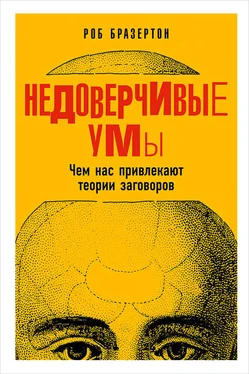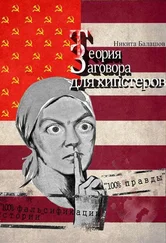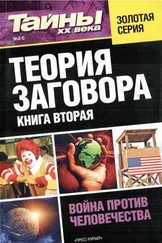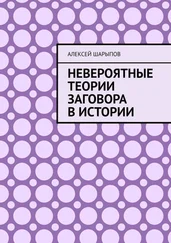Kosnik, L.-R. D. (2008). Refusing to budge: A confirmatory bias in decision making? Mind and Society, 7 (2), 193–214.
Baron, J. (1995). Myside bias in thinking about abortion. Thinking & Reasoning, 1 (3), 221–235.
Taber, C. S., & Lodge, M. (2006). Motivated skepticism in the evaluation of political beliefs. American Journal of Political Science, 50 (3), 755–769.
Stanovich, K. E., & West, R. F. (2007). Natural myside bias is independent of cognitive ability. Thinking & Reasoning, 13 (3), 225–247.
Jones, W. H., & Russell, D. (1980). The selective processing of belief disconfirming information. European Journal of Social Psychology, 10 (3), 309–312.
McHoskey, J. W. (1995). Case closed? On the John F. Kennedy assassination: Biased assimilation of evidence and attitude polarization. Basic and Applied Social Psychology, 17 (3), 395–409.
https://today.yougov.com/news/2012/02/03/birthers-are-back.
https://www.facebook.com/notes/sarah-palin/statementon-thecurrent-health-care-debate/113851103434.
http://www.people-press.org/2009/08/20/health-care-reform-closely-followed-much-discussed.
http://ap-gfkpoll.com/uncategorized/our-latest-poll-findings-12.
Nyhan, B., Reifler, J., & Ubel, P. A. (2013). The hazards of correcting myths about health care reform. Medical Care, 51 (2), 127–132.
http://www.dartmouth.edu/~nyhan/obama-muslim.pdf.
Nyhan, B., Reifler, J., Richey, S., & Freed, G. L. (2014). Effective messages in vaccine promotion: A randomized trial. Pediatrics, 133 (4), e835–e842.
Hart, P. S., & Nisbet, E. C. (2012). Boomerang effects in sScience communication: How motivated reasoning and identity cues amplify opinion polarization about climate mitigation policies. Communication Research, 39 (6), 701–723.
http://www.wnd.com/2011/05/301329.
Chait, J. (2008). The Big Con . Houghton Mifflin Harcourt. P. 242.
http://www.salon.com/2013/10/20/conspiracy_theories_explain_the_right.
http://www.washingtontimes.com/news/2008/mar/06/celebrity-911-conspiracy-club-still-growing.
Uscinski, J. E., & Parent, J. M. (2014). American Conspiracy Theories . Oxford University Press. P. 87.
Uscinski, J. E., & Parent, J. M. (2014). American Conspiracy Theories . Oxford University Press. P. 87–94.
Nyhan, B., Reifler, J., & Ubel, P. A. (2013). The hazards of correcting myths about health care reform. Medical Care, 51 (2), 127–132.
http://www.nyu.edu/gsas/dept/politics/seminars/bullock_f06.pdf.
http://www.politico.com/news/stories/0411/53563.html.
Obama, B. (2006). The Audacity of Hope. Three Rivers Press. P. 24. Русский перевод цит. по: Обама Б. Дерзость надежды. – М.:Азбука-классика, 2010.
Nickerson, R. S. (1998). Confirmation bias: A ubiquitous phenomenon in many guises. Review of General Psychology, 2 (2), 175–220.
Toplak, M. E., & Stanovich, K. E. (2003). Associations between myside bias on an informal reasoning task and amount of post-secondary education. Applied Cognitive Psychology, 17 (7), 851–860.
Nyhan, B., Reifler, J., & Ubel, P. A. (2013). The hazards of correcting myths about health care reform. Medical Care, 51 (2), 127–132.
http://www.ushistory.org/franklin/autobiography/page18.htm. Русский перевод цит по: Франклин Б. Время – деньги! – М.: АСТ, 2014.
Jane, E. A., & Fleming, C. (2014). Modern Conspiracy . Bloomsbury Academic. P. 78–79.
Knight, P. (2013). Conspiracy Culture . Routledge. P. 7.
Aaronovitch, D. (2010). Voodoo Histories . Riverhead. P. 232.
Pipes, D. (1997). Conspiracy . The Free Press. P. 49.
Kay, J. (2011). Among the Truthers . HarperCollins. P. xxiii.
Wheen, F. (2005). How Mumbo-Jumbo Conquered the World. Public Affairs.
Конец ознакомительного отрывка
Купить книгу










![Дэвид Граймс - Неразумная обезьяна [Почему мы верим в дезинформацию, теории заговора и пропаганду] [litres]](/books/385552/devid-grajms-nerazumnaya-obezyana-pochemu-my-verim-thumb.webp)

